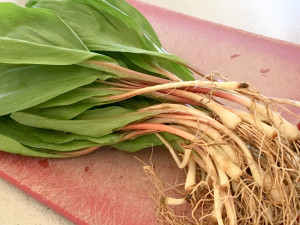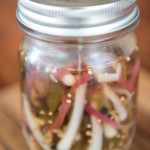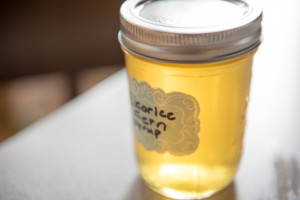 ONE OF THE BENEFITS of picking morels east of the Rockies is the chance to find ramps.
ONE OF THE BENEFITS of picking morels east of the Rockies is the chance to find ramps.
 The wild leeks are beloved in the Appalachians, especially in West Virginia where nearly every little mountain town has a ramp festival, and in the northern woods of Michigan. On my last visit to the Upper Peninsula I picked ramps with friends from Marquette. But that was a while ago, and if there’s one wild food I wished was native to the Pacific Northwest, the ramp would be near the top of the list.
The wild leeks are beloved in the Appalachians, especially in West Virginia where nearly every little mountain town has a ramp festival, and in the northern woods of Michigan. On my last visit to the Upper Peninsula I picked ramps with friends from Marquette. But that was a while ago, and if there’s one wild food I wished was native to the Pacific Northwest, the ramp would be near the top of the list.
To make this wild ramp aioli I used pickled ramps. The recipe is a conflation of Earthy Delight’s version and Tartine’s. You can use fresh ramps, too.
3 pickled or fermented ramps*, with tops**
1/2 tsp dried mustard
1/2 tsp peppercorns
1/2 tsp apple cider vinegar
2 tsp lemon juice
1 egg yolk
1/3 cup grapeseed or canola oil
2 tbsp olive oil
salt to taste
1. Place food processor bowl and blade in freezer for 15 minutes if possible.
2. Chop ramps. (I used previously pickled ramp bulbs and fresh tops—see notes below.)
3. Add chopped ramps, dried mustard, peppercorns, cider vinegar, lemon juice, and egg yolk to food processor and process until well mixed together, about 30 seconds.
4. Combine oils and slowly add to processor. Ingredients should thicken to a mayo-like consistency. Continue to add oil. Add salt to taste and more lemon juice or vinegar if necessary.
5. Refrigerate in a tightly sealed container.
Makes enough to fill a 6-oz jelly jar.
The ramp aioli will have the rich flavor and creamy consistency of a typical aioli or mayonnaise, but with the added garlicky bite of wild ramps. Using just the yolk and not the egg white will give it more body. For a chunkier aioli with flecks of bright green ramp tops, don’t over-process (unlike mine pictured above).
* Pickled Ramps recipe:

1lb ramps
1 cup white wine vinegar
1 cup water
1 cup sugar
1 tsp mustard seed
1 tsp coriander seed
1 tsp fennel seed
2 tsp mixed peppercorns
1 bay leaf
1 tbsp salt
1. Cut off root tips from ramps and trim leaves, leaving just a little green. Reserve tops for another use. Rinse ramps.
2. Blanche trimmed ramps in a pot of salted boiling water for 30 seconds. Remove and quickly shock under cold tap. Pat dry and place in a pint-sized canning jar.
3. Combine pickling ingredients in saucepan and bring to a boil. Pour over ramps and set aside to cool. Seal tightly and refrigerate up to two months.
** If using fresh ramps for the aioli, cut off the tops (the green leaves) and then blanche the tops in boiling water for 30 seconds, shock under cold tap, and squeeze out excess water before adding to food processor.

 THE LICORICE FERN is a beauty that lives in colonies in mixed lower-elevation forests of the Pacific Northwest, where it grows on trees, often well up in the canopy.
THE LICORICE FERN is a beauty that lives in colonies in mixed lower-elevation forests of the Pacific Northwest, where it grows on trees, often well up in the canopy.
 THE
THE 
